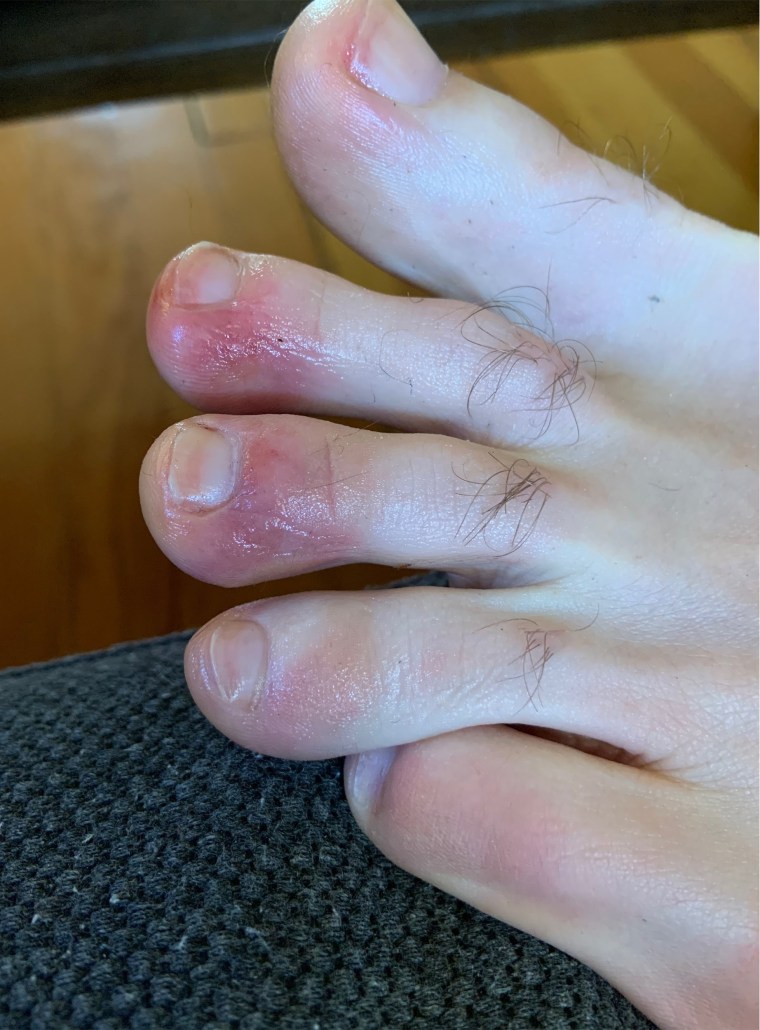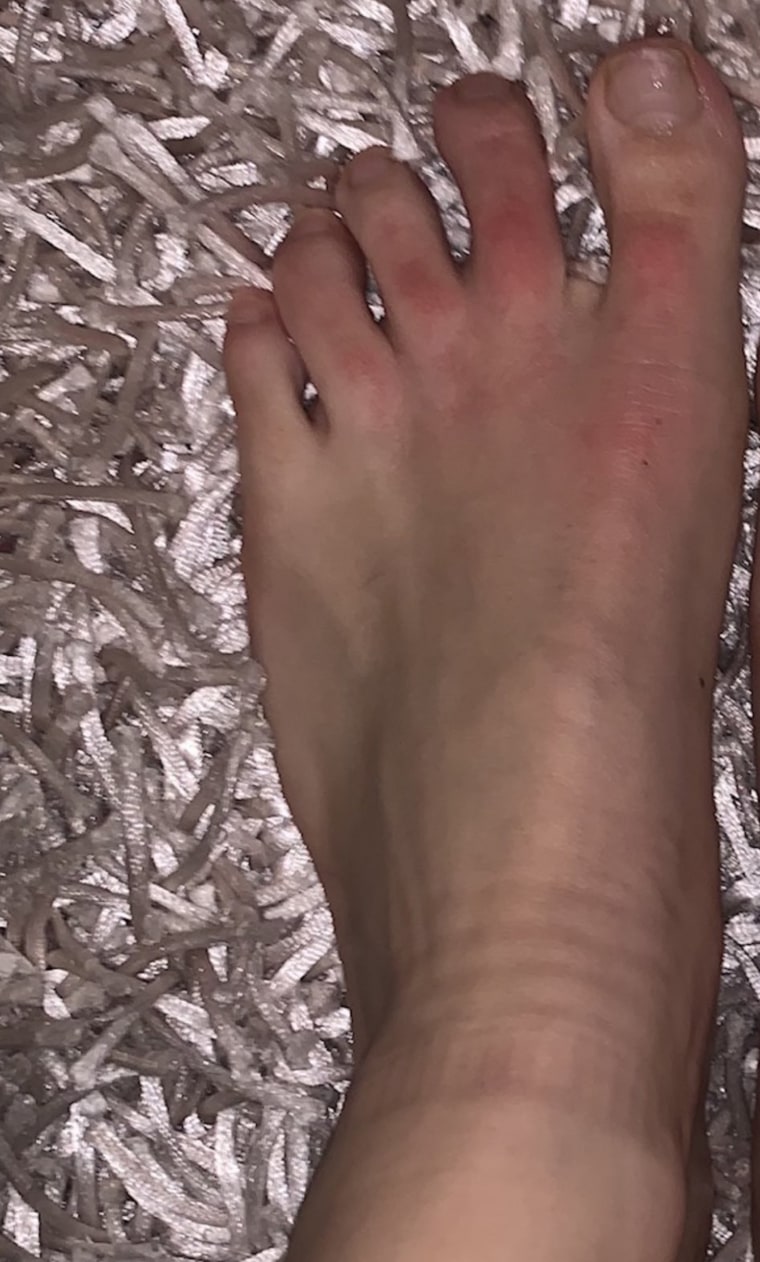Green Bay Packers quarterback Aaron Rodgers had a recent bout with COVID-19 that led to him miss 10 days of the football season. Rodgers, who was not vaccinated, joked during an appearance that he had one lingering effect from the illness: COVID toes. Yet in a recent press conference, Rodgers clarified that he actually has a fractured toe.
While Rodgers doesn't have COVID toes, it is an unexpected symptom of the coronavirus, much like pink eye and the loss of taste or smell. If you've forgotten all about the strange symptom, here's a quick refresher.
Dubbed "COVID toes" by the dermatology community, it can look like "purple lesions" on feet or hands.
But because COVID toes may appear before or without other coronavirus symptoms, Freeman believes it should be a criterion for testing. Dr. Lindy Fox, professor of dermatology at University of California, San Francisco, agreed.
What are COVID toes?
The condition usually starts with red or purple discoloration, and the skin may become raised or develop ulcerations. It can be on hands, too.
It has appeared as "purple, red bumps" on the tips of digits and pads, or on the tops of toes or sides of feet.
People with COVID toes may feel the skin is hot, burning or itchy.
One patient, David, 39, who didn't want to share his last name, experienced possible COVID toes. He wasn't tested for the virus, but said: "The affected toes were initially painful to touch and a bit sore while walking ... The pain and soreness lasted just over one week and gradually went away."

While other skin symptoms have appeared in COVID-19-positive patients, this one seems "COVID-specific," Fox clarified.
What causes COVID toes?
Again, the research is still developing, but experts have some ideas.
One hypothesis is there's just a lot of inflammation caused by the virus. The condition resembles pernio (also called chilblains or pre-frostbite), caused by exposure to cold temperatures, resulting in inflammation, which can appear as skin sores or bumps.
The other theory is that the symptom is due to blood vessel clots, which can occur in COVID-19 patients.
It's unclear how common COVID toes are.
In a study published in JAMA Dermatology in June, researchers noted how difficult it is to identify whether or not what appears to be COVID toes is actually related to COVID-19. Of the 1,319 patients included in their analyses, only 2% of cases could be directly linked to the coronavirus. Other research, such as this investigation of 32 patients published in July in the Journal of Cutaneous Pathology, found that the skin issues seen in COVID toes are almost identical to those seen in pernio due to other causes. They also found that blood clots were unlikely to be involved.

Rachel Sommer, who lives in Long Island, New York, shared a picture of her foot condition on Twitter. She did not get tested for coronavirus, but her symptoms included a slightly raised temperature, decreased appetite, fatigue, difficulty breathing and a sore throat.Rachel Sommer
The condition seems more common in children and young people, but it's "not exclusive" to them.
What's the treatment for COVID toes?
For patients who aren't experiencing a lot of other symptoms, (the condition) tends to resolve on its own.
If you notice discoloration on your feet or other hallmarks of COVID toes, contact a podiatrist or your primary care doctor and ask to be tested for COVID-19, she advised.
Underlying conditions, like a drug reaction or connective tissue disorder, can have similar symptoms, so providers should get a complete medical history.
For patients experiencing discomfort, warming your digits might help.
Some patients do well with topical steroids, and it is recommended to start with an over-the-counter hydrocortisone cream. If that's not enough to help, you should get in touch with your podiatrist or dermatologist.
What are other skin symptoms of COVID-19?
Skin issues, including COVID toes, can be a symptom of the coronavirus. In particular, different types of skin rashes may appear in different patients, including itchy bumps and patchy rashes as well as raised bumps or blisters that look like hives or chickenpox.
Examples of skin symptoms potentially related to COVID-19:
- Bumps on extremities and the torso, which are common with viral infections.
- Vascular lesions on the hands, feet and buttocks of patients who are very sick.
- Gangrene (dead tissue caused by an infection or lack of blood flow) in patients with severe symptoms and underlying conditions.
Ultimately, the importance of COVID toes doesn't lie in the condition itself. Rather, it could help researchers better understand how much disease is out there.
Recognizing COVID toes and making it a testing qualifier might change the course of someone's care ... You could be potentially infecting friends, neighbors without knowing it.



